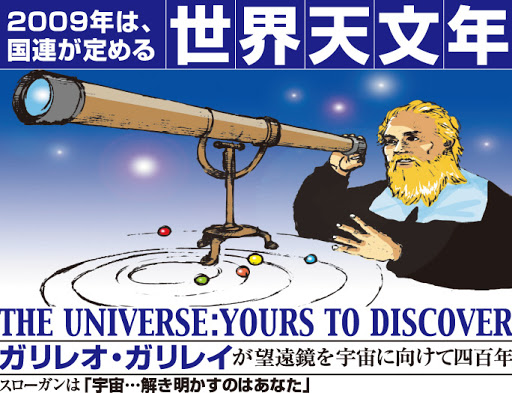
しかし,科学界は賞讃した一方,(キリスト教の)聖職者たちは怒り狂った。ガリレオが沈黙を強いられた時代の間に,ガリレオの敵たちは,答えることは無分別であったであろう議論によって,その機会(ガリレオが沈黙している時)を利用して偏見を増していった。ガリレオの教えはキリストの現存説(実在説(the doctrine of the Real Presence)と矛盾すると強く主張された(It was urged that ~)。イエズス会士のメルキオル・インコフェル神父は,「地球が動くという説(地動説)はあらゆる異端の中で最も忌まわしく,最も有害で,最も恥さらしのものである。地球の不動性はまことに神聖である。霊魂の不滅,神の存在,(キリストの)顕現(化身)に反対する議論の方が,地球が動くことを証明する議論よりもむしろ耐えるべき議論である(まだましである)」と主張した。「タリホー(tally-ho)」(注:英国のキツネ狩りの時に発せられる叫び)といったようなかけ声とともに,神学者たちは互いに血潮を沸き立たせ,今や,病によって衰弱し,盲目になりつつある過程の一人の老人(注:ガリレオ)を追求する準備を全て整えていた。 ガリレオは,再度,異端審問所に出頭するようにとロ-マに召喚された。異端審問所(の裁判官たち)は屈辱を受けたという感情を抱いており,1616年の召喚の時よりも厳しい雰囲気にあった。(注:荒地出版社刊の訳書では,津田氏は「Galileo was once more summoned to Rome to appear before the Inquisition, which, feeling itself flouted, was in a sterner mood than in 1616」を「ガリレオは再び,ローマに召喚され,宗教裁判に立たされた。馬鹿げたことのようだが,それは1616年よりも厳しいものだった」と訳出している。どうして「馬鹿げだことのようだが」というような訳になるのか,誰が馬鹿げたことだと思っているのか不明。なお,「the Inquisiton」の定訳は「異端審問所」) 彼は,当初,病が重くてフローレンス(フィレンツエ)から(ローマへ)の旅に耐えられないと言い訳した。ここに至って,ローマ教皇は自分の医師(侍医)を罪人(culprit)を診察するために送り,もし病気が深刻な状態でないことがわかれば鎖につないで連れてくると脅かした。この脅しによって,ガリレオは彼の敵の医学上の密使の裁断を待たずに,旅に出る決意をした。というのは(教皇になる前は親しい友だった)ウルバヌス八世は今や彼の厳しい敵であったからである。彼はロ-マに着いた時,異端審問所の牢獄に入れられ,主張を撤回しなければ拷問するぞと脅かされた。(注:津田氏は「and (he was) threatened with torture if he did not recant. 」を「(宗教裁判の獄に投ぜられ))取り消しを迫られ拷問でおどされた」と訳出している。if 文をまったく無視している上に,「threatened with torture」は「拷問するぞ」という脅かしであり、拷問され「た」と取れるような訳し方はいただけない。因みに、「The employees thretened the manegement with a strike.」は「従業員はストライキをするぞと言って経営者側を脅かした」のであり、ストライキをして脅かしたわけではない。) 異端審問所は,「(ガリレオが)我らの主イユス・キリスト及びキリストの最も輝かしき聖母マリア(or 処女マリア)の最も聖なる御名を呼び」「もし真心と偽らぬ信仰をもって,我らの前で(in Our presence /なぜ大文字なのか不詳),上述の誤謬と異端とを誓って取り消し(abjure),呪い,嫌悪するならば」,ガリレオは異端のために与えられる処罰を受けるべきではないと布告した(decreed)。それでも,自説を取消し(recantation)と懺悔(penitence)にもかかわらず 「我らはあなたを有罪とし,この聖庁(バチカン法庁)の正式の獄に,我らの意志により決定される期間,入獄させる。また,有益な贖罪(罪の償い)として,我らは汝に以後三年間,週一度,七つの懺悔の賛美歌を朗唱することを命ずる」(ということになった)。
Chapter 2: The Copernican Revolution, n.14
But while the scientific world applauded, the ecclesiastics were furious. During the time of Galileo’s enforced silence, his enemies had taken the opportunity to increase prejudice by arguments to which it would have been imprudent to reply. It was urged that his teaching was inconsistent with the doctrine of the Real Presence. The Jesuit Father Melchior Inchofer maintained that “the opinion of the earth’s motion is of all heresies the most abominable, the most pernicious, the most scandalous ; the immovability of the earth is thrice sacred ; argument against the immortality of the soul, the existence of God, and the incarnation, should be tolerated sooner than an argument to prove that the earth moves.” By such cries of “tally-ho” the theologians had stirred each other’s blood, and they were now all ready for the hunt after one old man, enfeebled by illness and in process of going blind. Galileo was once more summoned to Rome to appear before the Inquisition, which, feeling itself flouted, was in a sterner mood than in 1616. At first he pleaded that he was too ill to endure the journey from Florence ; thereupon the Pope threatened to send his own physician to examine the culprit, who should be brought in chains if his illness proved not to be desperate. This induced Galileo to undertake the journey without waiting for the verdict of his enemy’s medical emissary — for Urban VIII was now his bitter adversary. When he reached Rome he was thrown into the prisons of the Inquisition, and threatened with torture if he did not recant. The Inquisition, “invoking the most holy name of our Lord Jesus Christ and of His most glorious Virgin Mother Mary,” decreed that Galileo should not incur the penalties provided for heresy, “provided that with a sincere heart and unfeigned faith, in Our presence, you abjure, curse, and detest” the said errors and heresies.” Nevertheless, in spite of recantation and penitence, “We condemn you to the formal prison of this Holy Office for a period determinable at Our pleasure ; and by way of salutary penance, we order you during the next three years to recite, once a week, the seven penitential psalms.”
出典:Religion and Science, 1935, chapt. 2.
情報源:https://russell-j.com/beginner/RS1935_02-140.HTM
